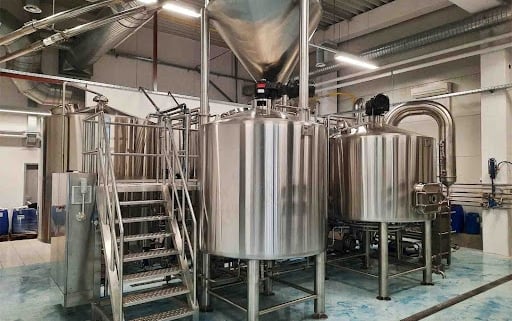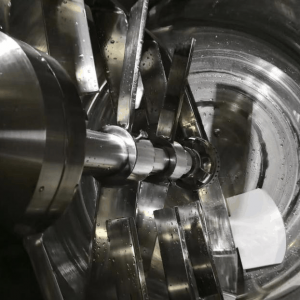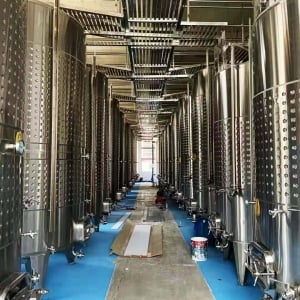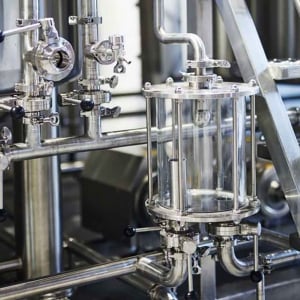Small Batch Brewing Equipment
Small Batch Brewing Equipment: Everything You Need to Know
Overview
Small batch brewing has grown in popularity among hobbyists and professional brewers alike. Whether you’re experimenting with new recipes or producing craft beer for a niche market, the right equipment can make all the difference. This guide covers everything from choosing the right equipment to understanding the brewing process, and even tips on selecting the best supplier. We’ll break down the essentials, offer comparisons, and provide insights that will make your brewing journey smoother and more enjoyable.
Guide to Small Batch Brewing Equipment
When venturing into small batch brewing, the selection of equipment is crucial. The right setup can enhance your brewing experience, ensuring consistency, quality, and efficiency. This section will explore the different types of equipment available, their uses, and how they contribute to the brewing process.
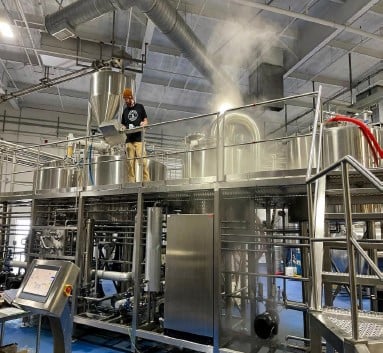
Types of Small Batch Brewing Equipment
| Equipment Type | Description | Key Features | Considerations |
|---|---|---|---|
| Brewing Kettle | Large pot used to boil wort (unfermented beer). | Made from stainless steel, with a capacity of 5-15 gallons. | Ensure it has a built-in thermometer and a spigot for easy transfer of wort. |
| Fermenter | Vessel where the wort is fermented into beer. | Available in glass, plastic, or stainless steel; airlock to release CO2. | Consider the size and material; stainless steel offers better durability. |
| Mash Tun | Used for the mashing process, where grains are soaked in hot water to extract sugars. | Often comes with a false bottom to separate grains from the liquid. | Choose a tun with good insulation to maintain temperature. |
| Hydrometer/Refractometer | Instruments used to measure the sugar content and potential alcohol level of the wort. | Easy to use; hydrometers are more common but refractometers are more precise. | Ensure accuracy by calibrating regularly. |
| Bottling Equipment | Tools for transferring and sealing beer into bottles. | Includes siphon, bottling bucket, and bottle caps. | Invest in a high-quality capper to ensure bottles are sealed properly. |
The Brewing Process
Brewing beer is as much an art as it is a science. Understanding the process helps you appreciate the role of each piece of equipment and how it contributes to the final product.
1. Mashing
Mashing is the first step in the brewing process where crushed grains (usually malted barley) are mixed with hot water in the mash tun. The purpose is to convert the starches in the grains into fermentable sugars, which will later be used by the yeast to produce alcohol.
During mashing, temperature control is critical. The ideal temperature range is typically between 148°F to 158°F (64°C to 70°C). This temperature range affects the enzyme activity, influencing the sweetness and body of the final beer.
2. Boiling
After mashing, the liquid, now called wort, is transferred to the brewing kettle for boiling. This step usually lasts about 60 to 90 minutes. Boiling serves multiple purposes: it sterilizes the wort, extracts flavors from the hops, and helps achieve the desired bitterness and aroma.
At this stage, hops are added at various times to create different flavor profiles. For example, hops added early in the boil contribute to bitterness, while those added later add aroma.
3. Fermentation
Once boiling is complete, the wort is cooled and transferred to the fermenter. Yeast is then added to the wort, beginning the fermentation process. This is where the magic happens—yeast converts the sugars from the mash into alcohol and carbon dioxide, producing beer.
Fermentation can take anywhere from one to three weeks, depending on the beer style and yeast used. During this time, it’s important to maintain a consistent temperature, usually between 65°F to 75°F (18°C to 24°C), to ensure proper yeast activity.
4. Bottling and Carbonation
After fermentation, the beer is siphoned into a bottling bucket, mixed with a small amount of sugar (known as priming sugar), and then transferred to bottles. The priming sugar provides food for the remaining yeast, which produces carbon dioxide and carbonates the beer in the bottle.
Proper sealing and storage are crucial at this stage. The bottles should be kept at room temperature for about two weeks to allow for carbonation, then refrigerated before serving.
Design, Capacity, and Customization Options
When choosing small batch brewing equipment, it’s essential to consider the design, capacity, and potential for customization. Here’s a breakdown of what to look for:
| Aspect | Description | What to Look For | Customizable Options |
|---|---|---|---|
| Capacity | Refers to the volume of beer that the equipment can produce in one batch. | 5-15 gallons for home brewing, larger for commercial small batches. | Some setups allow for modular expansion. |
| Space Requirements | The physical space needed to set up the equipment. | Compact designs are available for smaller spaces. | Equipment with a smaller footprint or stackable options. |
| Design and Aesthetics | The look and feel of the equipment, which can also affect ease of use. | Stainless steel is durable and easy to clean, with a professional appearance. | Custom finishes or branded elements for a personalized touch. |
| Layout | How the equipment is arranged in your brewing space. | A logical flow from mashing to bottling is ideal. | Custom layouts for optimized space utilization. |
Supplier Guide and Price Range
Choosing the right supplier is crucial for getting quality equipment at a reasonable price. Below is a comparison of different suppliers and the price range for small batch brewing equipment.
| Supplier | Equipment Offered | Price Range | Special Features | Customer Support |
|---|---|---|---|---|
| BrewTech Inc. | Full brewing systems, kettles, fermenters | $500 – $5,000 | Customization options, high durability | 24/7 Support, installation guidance |
| Home Brew Mart | Home brewing kits, accessories | $300 – $3,000 | Kits for beginners, detailed instruction manuals | Online tutorials, live chat |
| Craft Brewers Co. | Professional-grade small batch systems | $2,000 – $10,000 | Scalable systems, integration with smart brewing software | In-person consultations, tech support |
| DIY Brewing Supplies | Modular and DIY equipment | $150 – $2,500 | Affordable, customizable parts | Community forums, DIY guides |
Installation, Operation, and Maintenance
Proper installation and regular maintenance are key to ensuring your small batch brewing equipment performs at its best. Here’s a breakdown of what you need to know:
| Aspect | Description | Best Practices | Common Pitfalls |
|---|---|---|---|
| Installation | Setting up your brewing equipment in your space. | Follow manufacturer instructions closely; seek professional help for complex setups. | Incorrect assembly leading to leaks or inefficiencies. |
| Operation | Day-to-day use of the equipment, from mashing to bottling. | Maintain a clean workspace, calibrate instruments regularly. | Neglecting to clean between batches, leading to contamination. |
| Maintenance | Regular cleaning and servicing to keep the equipment in good condition. | Deep clean after every brewing session; check seals and connections regularly. | Using abrasive cleaners that damage equipment surfaces. |
How to Choose the Best Supplier
Choosing a supplier is more than just about price; it’s about finding a partner who understands your needs and offers long-term support. Here’s a guide to help you make an informed decision:
| Consideration | What to Look For | Supplier A | Supplier B | Supplier C |
|---|---|---|---|---|
| Reputation | Check reviews, ask for references, and look at the supplier’s history in the industry. | ✔️ | ✔️ | ❌ |
| Product Quality | Inspect sample products, look for certifications and warranties. | ✔️ | ✔️ | ✔️ |
| Customer Support | Availability of support staff, response time, and additional resources. | ✔️ | ❌ | ✔️ |
| Price and Value | Compare the cost against the features and quality offered. | $$$ | $$ | $$$ |
| Customization Options | Ability to tailor the equipment to your specific needs. | ✔️ | ❌ | ✔️ |
Comparing Pros and Cons of Different Equipment Options
Understanding the advantages and limitations of each equipment type can help you make the best choice for your brewing setup.
| Equipment Type | Advantages | Limitations |
|---|---|---|
| Stainless Steel Fermenter | Durable, easy to clean, doesn’t react with beer. | Higher cost compared to plastic or glass alternatives. |
| Plastic Bottling Bucket | Lightweight, affordable, easy to handle. | Can scratch easily, leading to potential contamination. |
| Glass Carboy | Doesn’t retain odors, allows visual inspection of fermentation. | Heavy, breakable, requires careful handling. |
| Electric Brewing Kettle | Precise temperature control, safe for indoor use. | Requires access to a reliable power source, higher initial cost. |

FAQs
To wrap up this guide, here are some frequently asked questions about small batch brewing equipment, along with concise answers.
| Question | Answer |
|---|---|
| What size brewing kettle do I need? | For small batch brewing, a 5-10 gallon kettle is typically sufficient, depending on your batch size. |
| Is stainless steel better than plastic for fermenters? | Yes, stainless steel is more durable, easier to clean, and doesn’t retain odors like plastic. |
| Can I start brewing with a basic kit? | Absolutely! Many homebrewers start with basic kits and upgrade as they gain more experience. |
| How often should I clean my brewing equipment? | Cleaning after every use is recommended to prevent contamination and maintain equipment longevity. |
| Do I need a dedicated brewing space? | Not necessarily, but having a dedicated, clean area can make the brewing process easier and more organized. |
Conclusion
Small batch brewing is a rewarding hobby that can lead to a deeper appreciation for craft beer. With the right equipment, you can produce high-quality beer at home, experiment with different styles, and even create your own unique brews. This guide has provided an in-depth look at the equipment, process, and considerations involved in small batch brewing, equipping you with the knowledge to make informed decisions. Remember, the journey is just as important as the destination, so enjoy every step of the brewing process!

